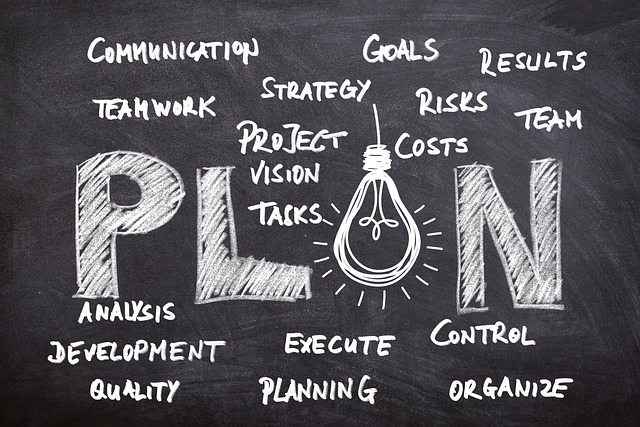The Importance of Collaboration in Professional Growth
Collaboration is more than a buzzword in today’s dynamic business landscape. It’s an essential strategy that connects like-minded professionals, facilitates knowledge sharing, and ultimately drives innovation. When you think about collaboration with industry peers, consider it a gateway for mutual growth. This isn’t just about exchanging business cards at networking events; it’s about fostering genuine professional relationships that can lead to new opportunities and insights. In a world where competition can seem overwhelming, forming alliances with others in your industry opens doors to possibilities you might not have explored alone.
The initial step in collaboration is understanding why it’s important. Imagine a scenario where you are facing challenges that your peers have already resolved. Their insights can save you time and resources. Each industry peer brings unique skills and perspectives to the table, enriching discussions and outcomes. Therefore, the growth isn’t merely individual but extends across all parties involved, making it a shared journey where everyone benefits. This approach is about creating synergies rather than isolated wins. When you collaborate effectively, you create an ecosystem where learning flourishes, and new ideas take root.
Identifying the Right Industry Peers
Finding the right industry peers is crucial for positive collaboration. Start by assessing your network and identifying individuals or organizations that align with your goals, values, and work ethic. You may want to include people who excel in areas where you seek improvement or those possessing complementary skill sets. For instance, if you specialize in marketing but lack technical skills, collaborating with a peer who understands web development can be extremely beneficial. This relationship allows both partners to grow while leveraging each other’s strengths.
Networking events, conferences, and online platforms like LinkedIn offer excellent opportunities to meet potential collaborators. When approaching new contacts, aim to build authentic relationships rather than seeking immediate transactions. Initiate conversations that reflect a sincere interest in their work and share your experiences. You can create a solid foundation for collaboration by expressing genuine curiosity and support. Over time, these professional connections can evolve into meaningful partnerships, enhancing your skills and understanding of the industry.
Establishing Trust and Open Communication
Trust forms the cornerstone of any successful collaboration. Building trust takes time and requires consistent effort. Open communication is vital here; it helps clarify expectations, share feedback, and address problems before they escalate. Create a safe space for discussions where partners can voice challenges or concerns without fear of judgment. When collaborating with industry peers, ensure that communication remains clear and concise. Misunderstandings can hinder progress and create frustration. Being transparent about your goals and limitations fosters trust and ensures that everyone remains on the same page.
Regular check-ins can strengthen your partnership. Schedule meetings—virtual or in-person—to discuss progress, brainstorm ideas, and adjust plans if necessary. Utilization of collaborative tools like Slack, Google Workspace, and Trello can revolutionize communication and productivity. These platforms enable you to share resources, track tasks, and ensure accountability among all parties involved. An effective collaboration isn’t merely about working together but nurturing a relationship that promotes growth and change.
Setting Clear Goals and Expectations
One of the most effective ways to collaborate with industry peers is by establishing clear goals and expectations from the outset. Without a clear roadmap, collaboration can drift off course, leading to frustration and wasted resources. Sit down together and outline what each party hopes to achieve through this partnership. Are you looking to launch a joint project? Or perhaps, you aim to co-host a webinar? Whatever the objectives may be, ensure they align with both parties’ long-term professional visions.
By setting mutual goals, you not only foster accountability but also create a shared vision that everyone can rally around. This shared purpose can motivate partners and ensure that the focus remains on achieving desired outcomes. Additionally, regularly revisit these goals throughout the collaboration process, adjusting them as necessary to reflect any changes in circumstances or new insights gained. Flexibility is key in any collaborative endeavor; it allows all collaborators to remain adaptive and responsive to evolving needs or challenges.
Leveraging Technology for Collaboration
In today’s digital age, technology plays an instrumental role in facilitating collaboration. Teams spread across different geographic locations can effectively work together where technology serves as the glue that binds them. From project management tools to video conferencing software, there is a plethora of resources designed for seamless collaboration. For instance, software like Asana or Basecamp helps streamline tasks, ensuring everyone remains aligned and updated on project status.
Video conferencing tools such as Zoom or Microsoft Teams enable face-to-face interactions despite physical distances. These tools enhance communication, allowing teams to share screens, conduct brainstorming sessions, and maintain the human element of collaboration. Utilizing cloud storage platforms like Google Drive or Dropbox for resource sharing ensures that important documents are accessible to all team members in real-time. When technology supports your collaborative efforts, you can increase efficiency, maintain transparency, and enhance productivity.
Cultivating a Win-Win Mindset
In any collaboration, nurturing a win-win mindset is crucial. Approach your partnerships with the belief that success is not a zero-sum game; rather, it’s about finding ways that all parties can benefit from their joint efforts. When you prioritize mutual growth, you open up avenues for more fulfilling collaborations. Foster an environment where everyone feels appreciated, valued, and heard. This mindset encourages peers to contribute their best ideas and insights without any reservation.
For example, if a peer shares advice that leads to your success, recognize their contribution openly. This acknowledgment not only solidifies trust but also encourages further collaboration. Celebrating small wins along the way strengthens the partnership bond. It’s essential that everybody feels inspired to contribute, knowing that their success is interlinked. The mantra here is simple: when we lift each other up, we all rise.
Evaluating and Reflecting on Collaborative Efforts
Once a collaboration reaches its conclusion, take time to evaluate the partnership. Conduct a debriefing session where all parties can share their experiences, discuss what worked well, and identify areas for improvement. Reflection is a powerful process that allows you to gather insights that can be applied to future collaborations. Ask probing questions; were the goals met? Did everyone communicate effectively? What could have been done differently? This evaluation process strengthens your skills, enhances professional relationships, and prepares you for future collaborative endeavors.
Maintaining an open dialogue during this phase is crucial. Everyone should feel comfortable discussing their thoughts without fear of repercussion. By creating a culture of feedback, you cultivate a more robust collaborative spirit. Ensure that lessons learned are documented to serve as a helpful reference for any future teamwork. Though the collaboration has ended, the connections and insights gained should continue to influence your professional journey positively.
Embracing Continuous Collaboration Opportunities
The collaborative spirit shouldn’t end once a project concludes. Instead, recognize that every relationship and partnership has the potential for future collaboration. Stay connected with your peers, and check in regularly. Share industry news, articles of interest, or tools that might benefit them. This ongoing connection helps solidify professional relationships, creating a network of industry peers you can rely on in various situations.
Also, don’t hesitate to participate in community events or workshops focused on collaborative efforts. These gatherings often bring together professionals from diverse backgrounds, providing an excellent opportunity to forge new partnerships. Whether it’s mentoring junior professionals or co-designing solutions, always be on the lookout for collaborative opportunities that foster growth. Proactively enriching professional relationships isn’t merely about personal gain; it’s about contributing to a collective success that lifts everyone involved.
Conclusion
Effective collaboration with industry peers leads to mutual growth and professional enrichment. By navigating the complexities of building professional relationships, fostering trust through open communication, setting clear goals, and leveraging technology, you can create a collaborative environment that thrives. Embrace a win-win mindset and continuously reflect on your experiences to enhance future endeavors. The journey of collaboration is ongoing; every connection you make has the potential to inspire new ideas and drive collective success in your industry.
FAQ
1. How can I find industry peers for collaboration?
Finding industry peers can start with networking at professional events, online forums, and utilizing platforms like LinkedIn. Engage in discussions that align with your interests and reach out to individuals whose skills complement yours.
2. What are some tools I can use to facilitate collaboration?
Tools such as Slack, Trello, Asana, and Zoom offer excellent features for communication, project management, and video conferencing, allowing seamless collaboration regardless of location.
3. Why is trust important in professional collaboration?
Trust is the foundation of effective collaboration. It encourages open communication, reduces misunderstandings, and fosters a supportive environment essential for innovative problem-solving.
4. How do I set clear goals when collaborating?
To set clear goals, both parties should discuss their objectives from the outset and align them with what they hope to achieve individually and collectively. Document these goals and review them regularly for progress.
5. How can I evaluate the success of a collaboration?
Evaluate a collaboration by conducting a debriefing session that reviews what worked well, what didn’t, and lessons learned. Open dialogue allows all parties to share their insights and contributes to future improvements.



